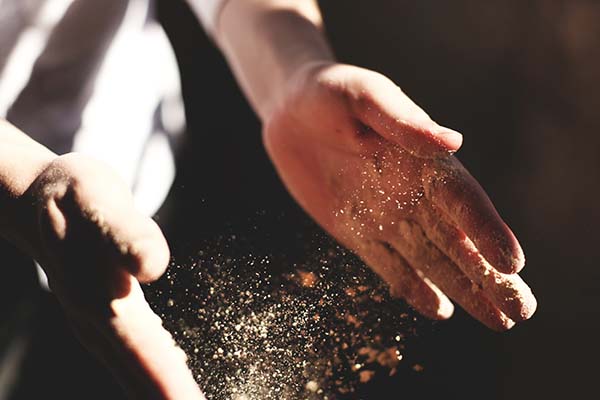
The Hidden Dangers of Construction Paper: Why It Harms Flooring and a Superior Alternative in Pad ‘N Protect Runners"
In the fast-paced world of construction, temporary floor protection is a crucial consideration. While construction paper has long been the go-to choice for many contractors, its popularity masks a series of hidden dangers that can significantly harm flooring. In this comprehensive blog post, we'll delve into the drawbacks of using construction paper, why it poses risks to flooring surfaces, and introduce Pad ‘N Protect floor runners as the ultimate solution. This deep dive aims to provide a thorough understanding of the challenges posed by construction paper and how a superior alternative can revolutionize floor protection in construction projects.
The Pitfalls of Construction Paper:
When considering the potential damage caused by construction paper, it's essential to understand its composition and application. Common products such as Ram Board, X-Board, Builder Board, or White Vapor often incorporate paper fibers and may come as single-layer rolls or feature a slick sealant on the backing. Unfortunately, the side that comes into contact with the floor tends to shift and slide, leading to a significant risk of damage.
One of the primary drawbacks of construction paper is its propensity to create a "sandpapering" effect. As the paper slides across the floor surface, it can grind debris into the flooring, resulting in scratches, scuffs, and a sanded appearance. Despite efforts to clean the floors thoroughly before laying down the paper, the risk of damage remains a persistent concern.
Moreover, construction paper is not without its other vulnerabilities. The thin and inflexible structure can lead to tearing during the tape-down process or underfoot when crew members traverse the work site. These structural limitations increase the likelihood of damage throughout the construction project.
The Repair Conundrum:
Dealing with the aftermath of construction paper-related damage involves a series of challenges. Scratches, pits, and sanded sections of the floor's finish are common issues, and while they are repairable, the process is not without its costs. In many cases, repairs necessitate resurfacing the floors, applying new layers of stains and varnish, and, in severe instances, even replacing entire floorboards or tiles. The financial burden of these repairs can outweigh any initial cost-saving benefits derived from using construction paper.
A Damage-Free Alternative:
To address the drawbacks of construction paper and provide a damage-free alternative, contractors need to explore fabric-based materials. Particularly, those composed of gentle, cotton-like material offer a solution that is flexible, durable, and avoids the sandpapering effect. Unlike construction paper, these fabric-based materials provide a secure grip, ensuring stability and preventing the dragging of debris.
Introducing Pad ‘N Protect Runners:
Born out of the frustration with the limitations of standard construction papers, Pad ‘N Protect runners offer a revolutionary solution to floor protection in construction projects. These runners are engineered with a cotton-like backing and a true non-skid construction, providing superior shielding for hardwoods and other vulnerable materials. The waterproof top layer ensures easy cleaning without compromising grip or risking slips.
Pad ‘N Protect runners go beyond typical construction papers with their high durability and tear-proof design. While offering excellent impact resistance, they can be laid over masonite for heavy-duty protection. Contractors seeking an upgrade from traditional construction papers are encouraged to request samples and experience the difference for themselves.
Extended Information on Pad ‘N Protect Runners:
Pad ‘N Protect runners redefine the concept of temporary floor protection. With their cotton-like backing, these runners offer a secure and gentle grip on flooring surfaces. Unlike construction paper, the true non-skid construction of Pad ‘N Protect runners ensures stability during construction activities, eliminating the risk of slips and the potential for dragging debris.
The waterproof top layer is a game-changer, allowing for easy cleaning without compromising the runner's grip or introducing slip hazards. This feature sets Pad ‘N Protect runners apart from traditional construction papers, which often lack waterproofing capabilities.
Furthermore, Pad ‘N Protect runners are designed for maximum durability and tear resistance. The high-quality construction ensures that these runners can withstand the rigors of construction projects without succumbing to the tearing issues commonly associated with construction paper.
In instances where heavy-duty protection is required, Pad ‘N Protect runners can be effectively laid under masonite. This combination provides an extra layer of impact resistance, making it a versatile solution for a wide range of construction scenarios. Contractors can now rest assured that their choice of temporary floor protection not only guards against scratches but also provides a reliable barrier against impacts.
The affordability of Pad ‘N Protect runners adds another layer of appeal to their value proposition. While delivering superior protection, these runners come at a competitive price point, ensuring that contractors can invest in a high-quality solution without breaking the bank. Bulk discounts further enhance the cost-effectiveness of Pad ‘N Protect runners, making them an economically viable choice for construction projects of all sizes.
In conclusion, the risks and drawbacks associated with traditional construction papers make them a less-than-ideal choice for temporary floor protection in construction projects. The potential for damage, costly repairs, and the need for replacements can outweigh any initial cost savings. Contractors must look beyond the conventional options and consider innovative alternatives like Pad ‘N Protect runners.
Pad ‘N Protect runners offer a damage-free solution with their cotton-like backing, true non-skid construction, and waterproof top layer. The extended information on Pad ‘N Protect runners highlights their durability, tear resistance, and versatility, providing contractors with a comprehensive understanding of the benefits they bring to construction projects. Ready to make the switch? Contractors are encouraged to request samples or place a bulk order by calling 1-833-900-1712 or emailing info@padnprotect.com. Upgrade your floor protection strategy with Pad ‘N Protect runners and experience unmatched performance in construction site shielding."
